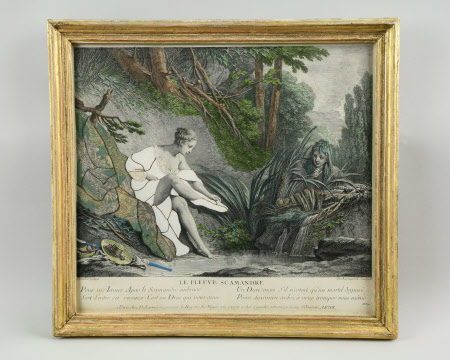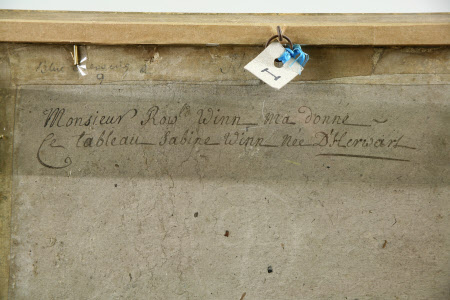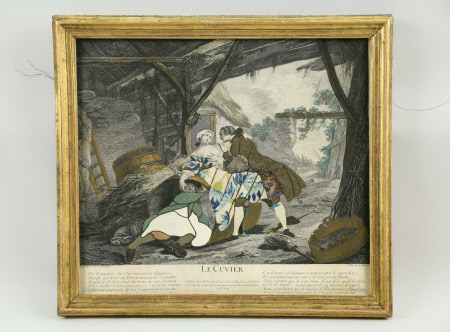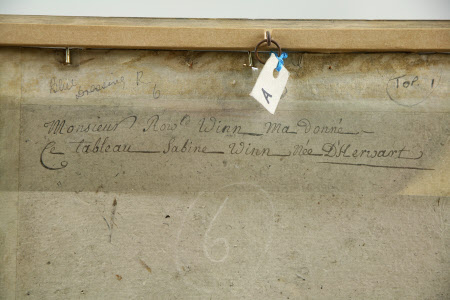Suites d'Estampes Nouvelles pour les Contes de La Fontaine: Le Fleuve Scamandre (after Francois Boucher)
Nicolas Larmessin IV (Paris 1684 - 1755)
Category
Art / Prints
Date
1700 - 1800
Materials
Paper, Textile
Measurements
360 x 400 mm
Order this imageCollection
Nostell Priory, West Yorkshire
NT 960084.9
Caption
In the early 1760s Sabine Winn picked up her scissors and began to create a series of works that would become her personal masterpiece. They began as a group of 16 French prints from the risqué Suite de Larmessin, given to her by her new husband. Winn’s incredible skill, dexterity, vision and patience transformed them into something far more interesting and personal. Her unique creations are ‘dressed prints’, in which parts of the costume in the image are meticulously cut out and adorned with pieces of textile pasted onto the back, probably taken from her own garments. Born in Vevey, Switzerland, Winn moved to London and then to Nostell in West Yorkshire in 1765, a few years after her marriage. Because she could not speak English well and her husband was often travelling, she struggled to settle into life in Yorkshire, preferring the company of French-speaking friends in London. The process of creating her pictures might well have been a comforting reminder of home. The technique is one that she had presumably mastered before leaving Switzerland, as it had been fashionable in continental Europe during the late 17th and early 18th centuries. The prints show Winn’s remarkable understanding of fabric. Grains are laid to suggest drapery, and patterns arranged to give a sense of movement. There is extraordinary attention to detail – from the tiny French-knot buttons sewn onto garments, to slivers of original paper left overlaying the fabric to create structure. Minute pieces of lace are used to embellish the neckline and cuffs of a simple white linen dress. Winn has painted areas of colour onto the print to add further realism and interest, adding a lush green to the background foliage and giving the bather, who is removing her stockings, rosy pink lips. The fabric draped over a branch behind her, now faded but preserved on the back, was originally rich shades of green and vibrant coral. Once her work was complete, each picture was backed with card, framed and a hand-written label affixed, confirming the piece as her own creation. It is rarely possible to attribute dressed prints to an individual, which gives Winn’s work particular importance.
Summary
Aquatint
Makers and roles
Nicolas Larmessin IV (Paris 1684 - 1755) , engraver (printmaker) after François Boucher (Paris 1703 – Paris 1770), artist probably Sabine Louise d'Hervart, Lady Winn (1734 - 1798), embroiderer
References
Conroy, Rachel, Women Artists and Designers at the National Trust, 2025, pp. 64-5



